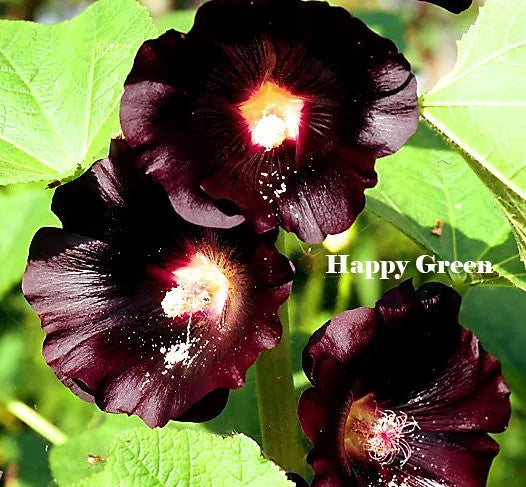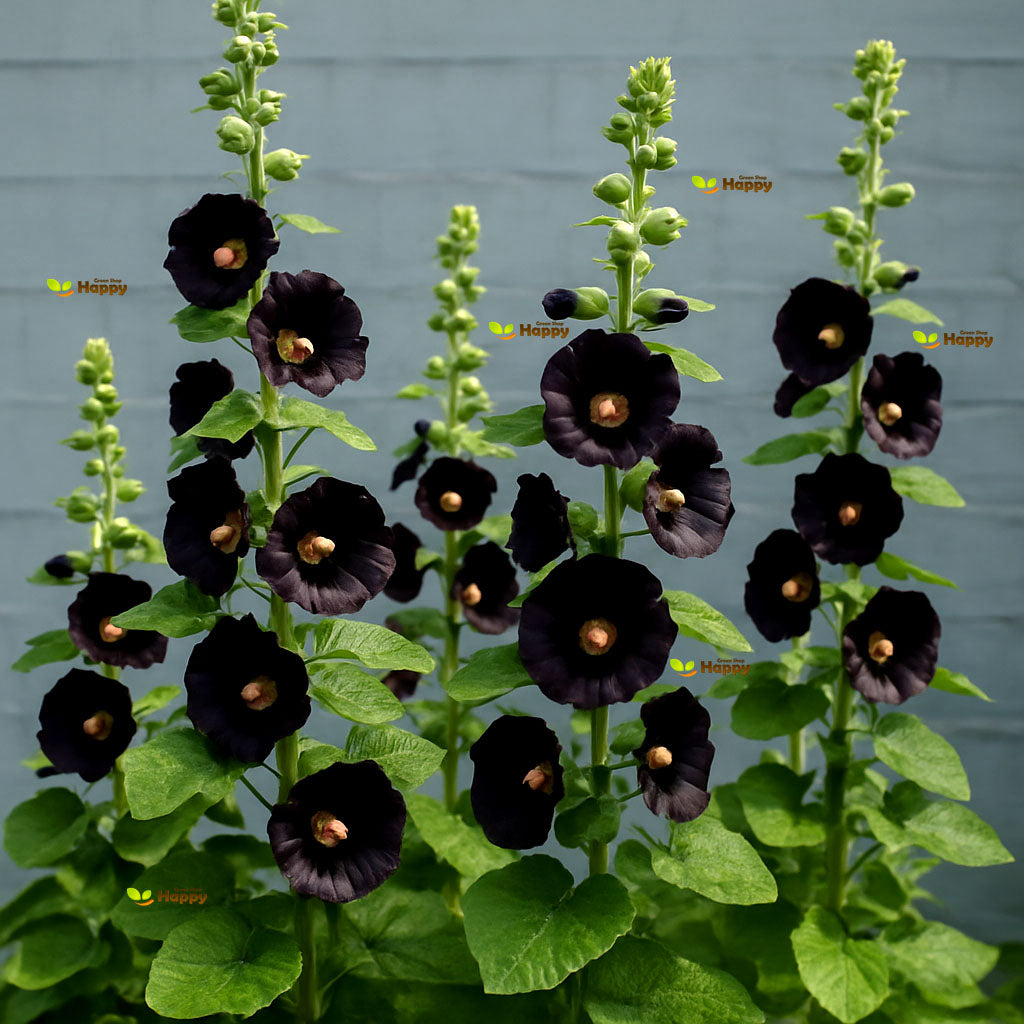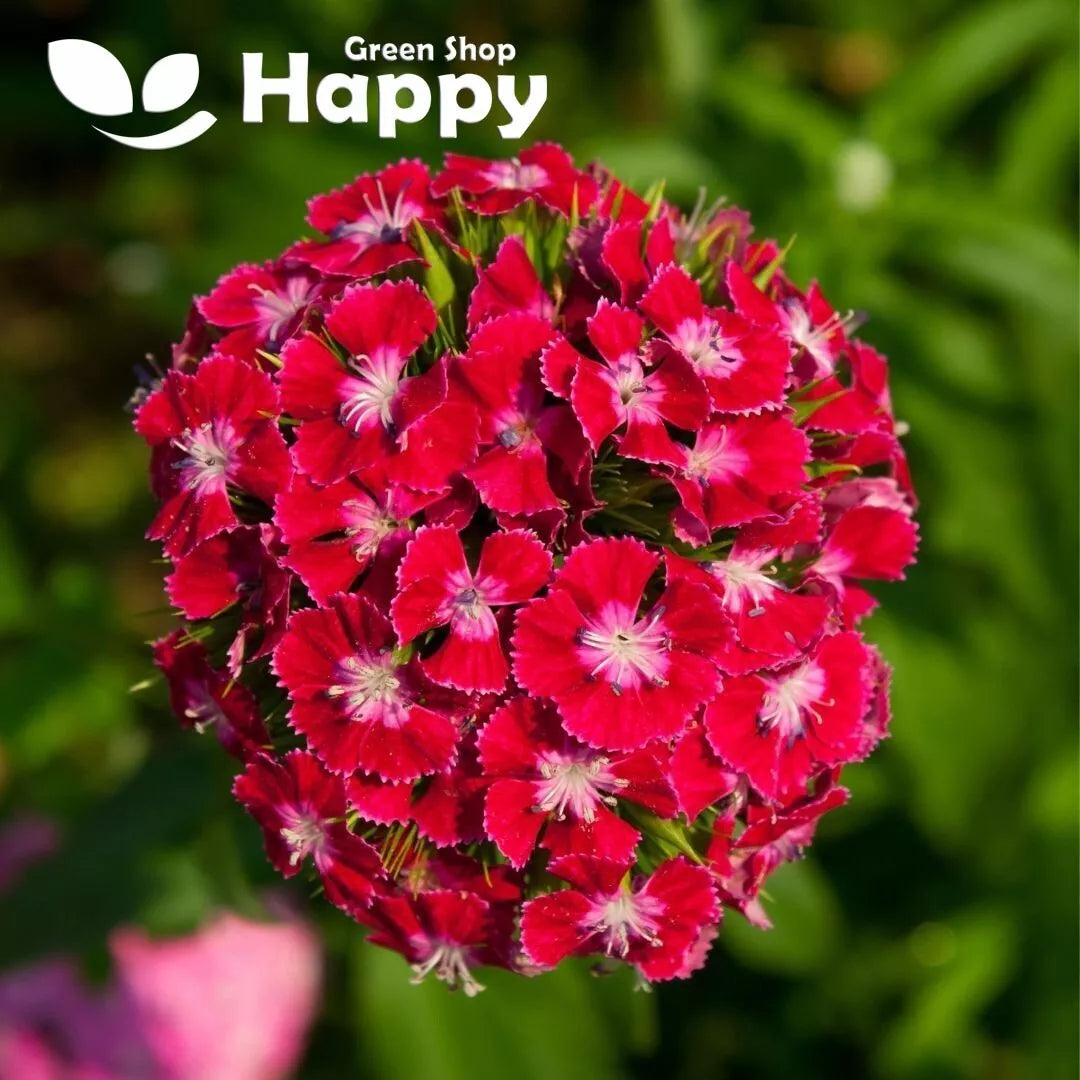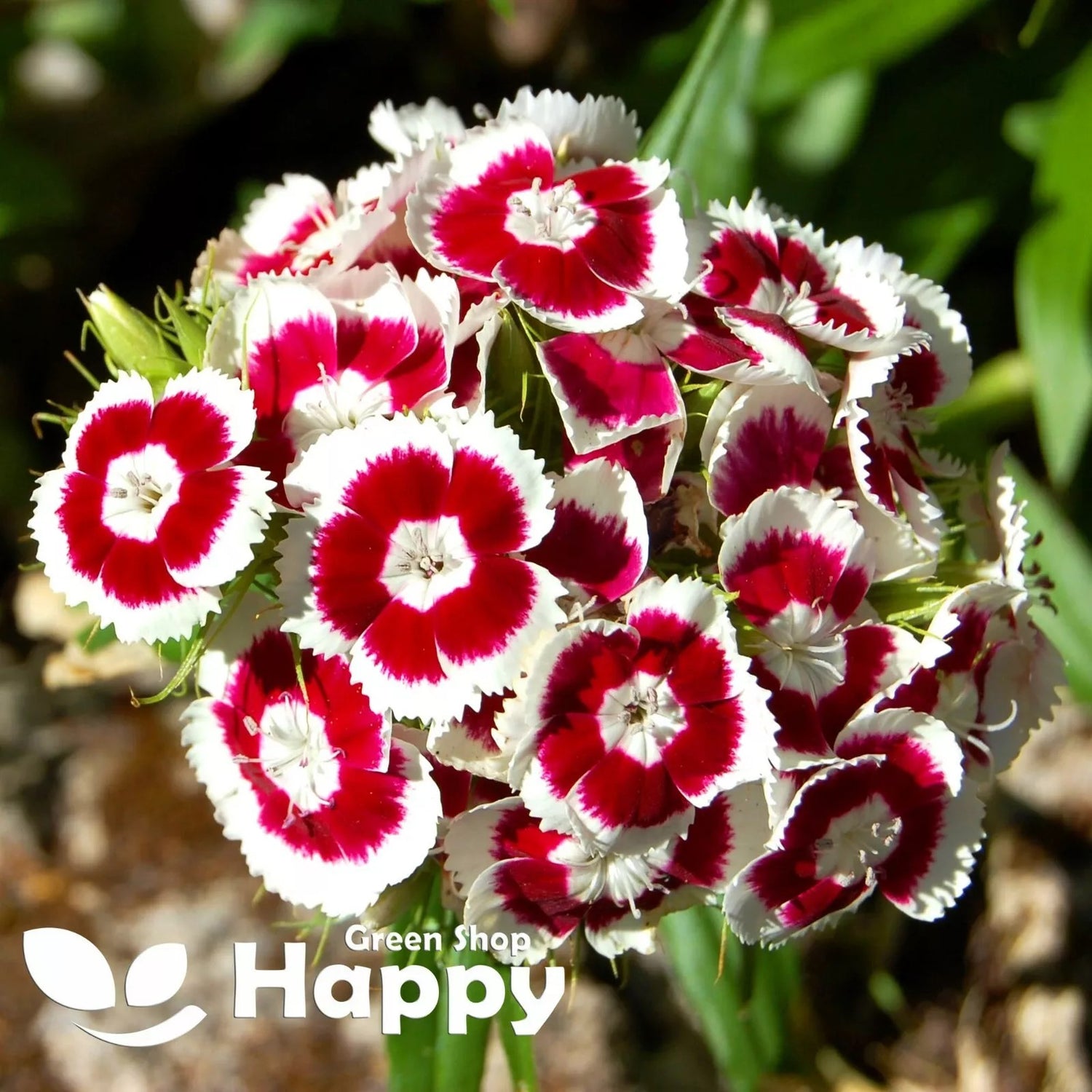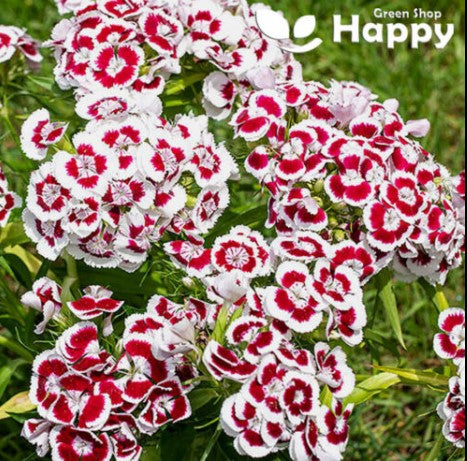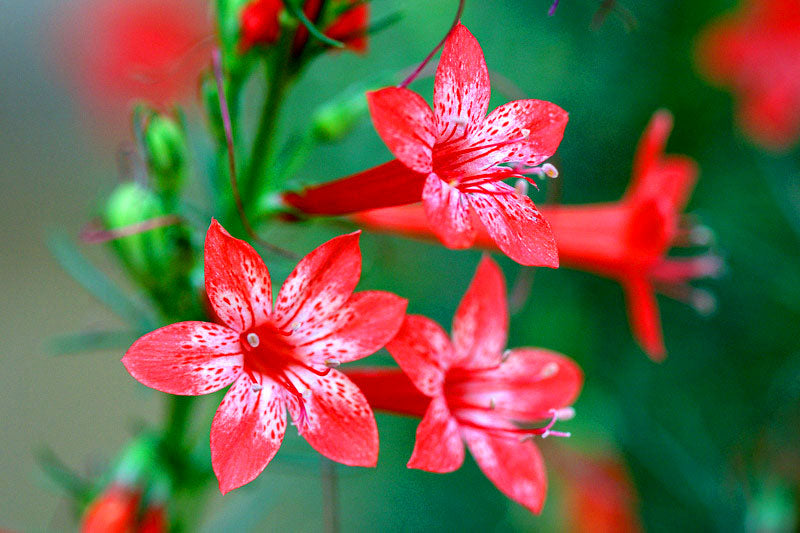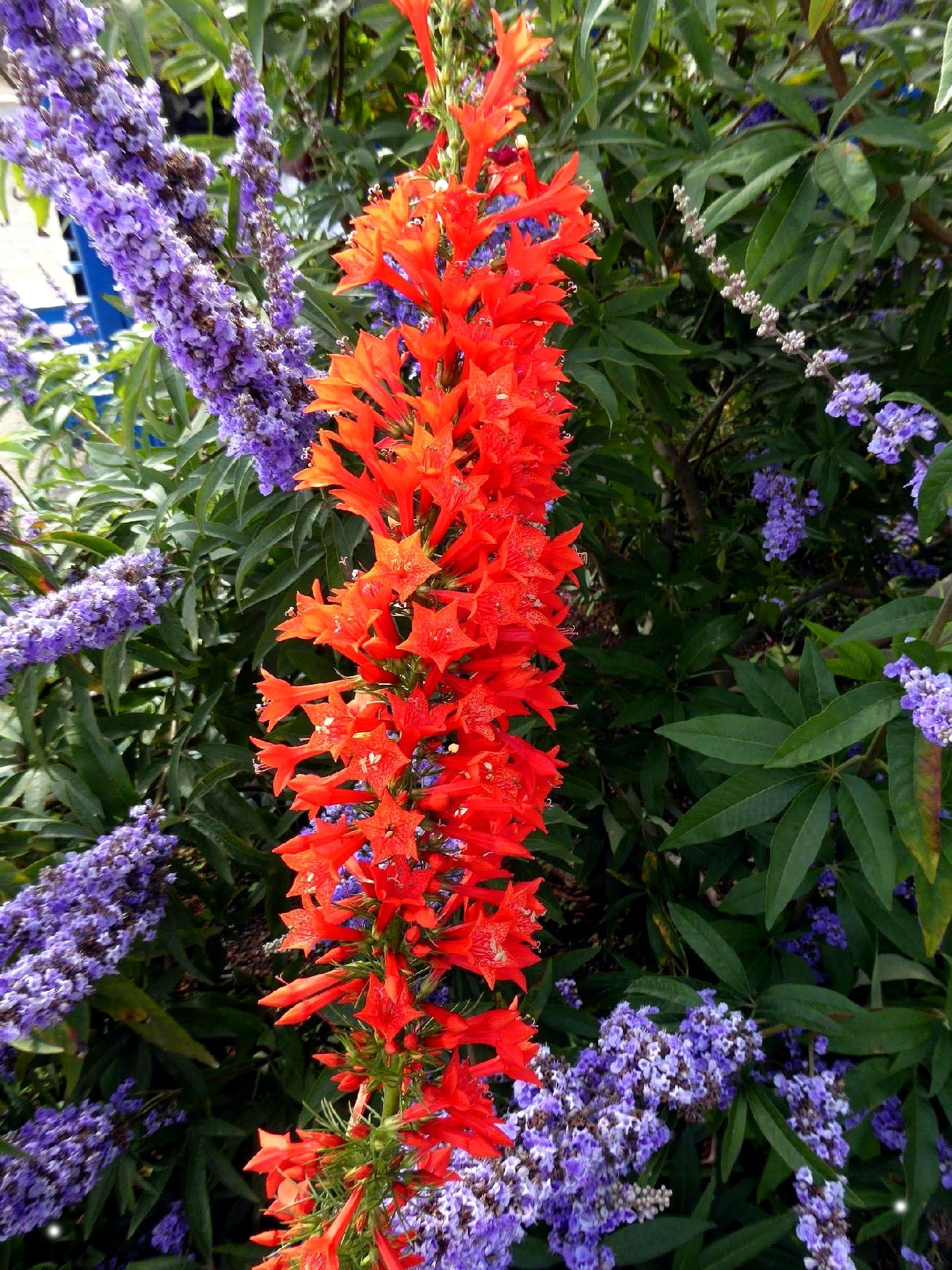Sort by:
50 products
50 products
Black Hollyhock – Seeds (Althaea rosea nigra)
Black Hollyhock (Althaea rosea nigra) is a striking biennial producing tall spikes of deep, dark purple to almost black double blooms. Its dramatic flowers create a bold focal point in borders, cottage gardens, and pollinator-friendly areas. Easy to grow and long-lasting, this variety attracts bees and butterflies while adding elegance and vertical interest to any garden.
Why Grow "Black Hollyhock"
-
Tall spikes of deep purple to nearly black flowers
-
Dramatic focal point for borders and cottage gardens
-
Attracts bees, butterflies, and other pollinators
-
Hardy biennial with long-lasting blooms
Key Features
-
Type: Biennial (Althaea rosea nigra)
-
Height: 1.8–2.0 m
-
Flowering: Second year after sowing
-
Position: Full sun
-
Uses: Borders, cottage gardens, pollinator planting, cut flowers
Ideal For
-
Creating vertical interest and dramatic color in borders
-
Cottage and mixed garden designs
-
Pollinator-friendly planting
-
Gardeners seeking bold, elegant biennial flowers
Sowing & Growing
-
Sow indoors: January–March
-
Sow outdoors: Directly in soil April–May
-
Germination: 14–21 days
-
Plant out after last frost, spacing 45–60 cm apart
-
Prefers full sun and well-drained soil
Wallflower 'Fair Lady' Mix Seeds (Cheiranthus cheiri)
Wallflowers 'Fair Lady' are fragrant biennial flowers producing bright, cheerful blooms in a variety of colors. Their compact, bushy growth makes them ideal for borders, rock gardens, and cottage-style plantings, while their long-lasting, sweet-scented flowers are perfect for cut flowers. This mix brings vivid color and charm to any garden.
What Makes It Special
-
Produces bright, fragrant blooms in multiple colors
-
Compact, bushy growth suitable for borders and containers
-
Excellent for cut flowers with long vase life
-
Attracts pollinators to the garden
Key Features
-
Botanical name: Cheiranthus cheiri
-
Common name: Wallflower 'Fair Lady'
-
Seed count: Approx. seeds per pack
-
Height/Spread: 30–45 cm tall, 25–35 cm spread
-
Position: Full sun to partial shade, well-drained soil
-
Flowering period: Second year (biennial), spring to early summer
-
Lifespan: Biennial
Ideal For
-
Borders, cottage gardens, and rock gardens
-
Cut flower arrangements
-
Pollinator-friendly plantings
-
Mixed flower beds
Sowing Instructions
-
When to sow:
-
Indoors: February–March for transplanting
-
Outdoors: April–May in well-prepared soil
-
-
How to sow:
-
Sow thinly on the surface and press lightly into soil
-
Keep soil moist until germination (10–20 days)
-
-
Transplant/Thin: Space seedlings 25–30 cm apart
-
Care: Protect young plants from frost; stake if needed
Sweet William Scarlet Seeds (Dianthus barbatus Red)
Sweet William Scarlet is a vibrant biennial flower renowned for its rich, scarlet-red flower clusters. With upright growth and densely packed blooms, it is perfect for borders, cottage gardens, and cut flower arrangements. This hardy biennial adds striking color and charm to any garden space.
What Makes It Special
-
Produces vivid scarlet-red flower clusters
-
Compact, upright growth ideal for borders and mixed beds
-
Excellent for cut flowers with long-lasting blooms
-
Biennial: reliable flowering in the second year
Key Features
-
Botanical name: Dianthus barbatus
-
Common name: Sweet William Scarlet
-
Seed count: Approx. seeds per pack
-
Height/Spread: 30–50 cm tall, 20–30 cm spread
-
Position: Full sun to partial shade, well-drained soil
-
Flowering period: Second year; late spring to early summer
-
Lifespan: Biennial
Ideal For
-
Borders, cottage-style gardens, and mixed flower beds
-
Cut flower arrangements
-
Pollinator-friendly gardens
-
Containers and patio planting
Sowing Instructions
-
When to sow:
-
Indoors: February–April for transplanting
-
Outdoors: April–May in well-prepared soil
-
-
How to sow:
-
Sow seeds thinly on the surface and press lightly into soil
-
Keep soil moist until germination (10–20 days)
-
-
Transplant/Thin: Space seedlings 20–30 cm apart
-
Care: Protect young plants from frost; deadhead spent flowers to prolong bloom
Sweet William ‘Pinocchio’ Mix – Seeds
(Dianthus barbatus) – Biennial/Short-lived Perennial
The Sweet William ‘Pinocchio’ Mix is a compact variety that produces charming clusters of vividly colored flowers in shades of red, pink, white, and bicolor. Its fragrant, long-lasting blooms make it a favorite for borders, rock gardens, and cut flowers. Compact in habit, it’s perfect for smaller spaces and containers while still bringing cottage-garden charm.
Key Features
-
Type: Biennial / short-lived perennial
-
Height: 25–30 cm
-
Blooming period: May–July (from second year)
-
Position: Full sun to partial shade
-
Soil: Well-drained, fertile soil
Ideal For
-
Borders and edging
-
Rock and cottage gardens
-
Containers and small gardens
-
Long-lasting cut flowers
Sowing & Growing
-
Sow indoors: February–April at 18–20°C
-
Sow outdoors: May–June for flowering the following year
-
Sowing depth: Surface sow, lightly cover with fine soil
-
Spacing: 15–20 cm apart
-
Care: Deadhead regularly; mulch in winter for protection

Sweet William Flower Mix "Herald of Spring" - 700 seeds (Dianthus barbatus)
£1.15
Unit price perSweet William Flower Mix "Herald of Spring" - 700 seeds (Dianthus barbatus)
£1.15
Unit price perSweet William Flower Mix ‘Herald of Spring’ Seeds (Dianthus barbatus) – 700 Seeds
Celebrate spring with Sweet William Flower Mix ‘Herald of Spring’ (Dianthus barbatus). This vibrant annual mix produces clusters of fragrant, brightly colored blooms in shades of pink, red, and white. Perfect for borders, cottage gardens, and cutting gardens, it’s easy to grow, long-flowering, and attracts pollinators for a lively garden display.
How to Grow
-
Sow directly outdoors in spring after the last frost or indoors 6–8 weeks earlier.
-
Use well-drained soil in full sun to partial shade.
-
Scatter seeds thinly and cover lightly with soil.
-
Keep soil moist until germination (10–14 days).
-
Thin seedlings to 20–30 cm apart for healthy growth.
-
Deadhead regularly to encourage continuous flowering.
Key Features
-
Clusters of fragrant blooms in pink, red, and white shades
-
Hardy, easy-to-grow annual or biennial depending on climate
-
Long-flowering and attractive to pollinators
-
Ideal for borders, cottage gardens, and cutting gardens
-
Compact growth habit perfect for edging and containers
Ideal For
-
Flower beds, borders, and cottage gardens
-
Cutting gardens for fresh bouquets
-
Pollinator-friendly plantings
-
Containers and patio planters
Sowing
-
Best time: Spring outdoors or 6–8 weeks earlier indoors
-
Germination: 10–14 days
-
Sow thinly, cover lightly, and keep soil moist
-
Prefers full sun and well-drained soil
Quick Tip
-
For a prolonged display, sow successive batches every 2–3 weeks during spring.
Sweet William ‘Holborn Glory’ Seeds (Dianthus barbatus)
Sweet William ‘Holborn Glory’ is a charming biennial or short-lived perennial with clusters of bi-colored red, pink, and white flowers. Blooming from late spring to early summer, it’s perfect for borders, cottage gardens, and pollinator-friendly spaces. Easy to grow and long-lasting, it adds vibrant color and fragrance to any garden.
What Makes It Special
-
Eye-catching clusters of red, pink, and white flowers
-
Fragrant and attractive to bees and butterflies
-
Hardy and easy to grow
Key Features
-
Botanical name: Dianthus barbatus
-
Biennial/perennial
-
Height: 30–45 cm
-
Bloom time: Late spring to early summer
Ideal For
-
Borders, cottage gardens, and mixed plantings
-
Pollinator-friendly gardens
-
Containers and cut flower arrangements
Sowing
-
Sow indoors Feb–Apr or outdoors Apr–Jun
-
Cover seeds lightly with soil
-
Germination: 10–14 days at 18–22°C
-
Space seedlings 25–30 cm apart
-
Flowers the following year

Sweet William 'Super Duplex' mix - 1000 seeds (Dianthus barbatus Mix Double)
£1.15
Unit price perSweet William 'Super Duplex' mix - 1000 seeds (Dianthus barbatus Mix Double)
£1.15
Unit price perSweet William 'Super Duplex' Mix Seeds (Dianthus barbatus Mix Double)
Sweet William 'Super Duplex' is a biennial flower prized for its lush, double-layered blooms in a mix of vibrant colors. Its dense flower clusters and upright growth make it perfect for borders, cottage gardens, and cut flower arrangements, adding a bold and elegant splash of color.
What Makes It Special
-
Produces dense, double-layered flower clusters
-
Vibrant mix of colors for eye-catching displays
-
Compact, upright growth ideal for borders and mixed beds
-
Excellent for cut flowers with long-lasting blooms
Key Features
-
Botanical name: Dianthus barbatus
-
Common name: Sweet William 'Super Duplex'
-
Seed count: Approx. seeds per pack
-
Height/Spread: 30–50 cm tall, 20–30 cm spread
-
Position: Full sun to partial shade, well-drained soil
-
Flowering period: Second year; late spring to early summer
-
Lifespan: Biennial
Ideal For
-
Borders, cottage gardens, and mixed flower beds
-
Cut flower arrangements
-
Pollinator-friendly gardens
-
Containers and patio planting
Sowing Instructions
-
When to sow:
-
Indoors: February–April for transplanting
-
Outdoors: April–May in well-prepared soil
-
-
How to sow:
-
Sow seeds thinly on the surface and press lightly into soil
-
Keep soil moist until germination (10–20 days)
-
-
Transplant/Thin: Space seedlings 20–30 cm apart
-
Care: Protect young plants from frost; deadhead spent flowers to prolong bloom
Sweet William 'Auricula Eyed' Mix Seeds (Dianthus barbatus)
Sweet William 'Auricula Eyed' is a biennial flower prized for its clusters of fragrant blooms with contrasting “eye” centers. This mix offers a variety of vivid colors, making it perfect for borders, cottage gardens, and pollinator-friendly plantings. Its upright growth and dense flower clusters add dramatic color and charm to any garden setting.
What Makes It Special
-
Produces dense clusters of fragrant, bi-colored flowers
-
Attractive to bees, butterflies, and other pollinators
-
Compact, upright growth ideal for borders and mixed beds
-
Biennial: provides a reliable display in the second year
Key Features
-
Botanical name: Dianthus barbatus
-
Common name: Sweet William 'Auricula Eyed'
-
Seed count: Approx. seeds per pack
-
Height/Spread: 30–50 cm tall, 20–30 cm spread
-
Position: Full sun to partial shade, well-drained soil
-
Flowering period: Second year; late spring to early summer
-
Lifespan: Biennial
Ideal For
-
Borders, cottage-style gardens, and mixed flower beds
-
Cut flower arrangements
-
Pollinator-friendly gardens
-
Containers and patio pots
Sowing Instructions
-
When to sow:
-
Indoors: February–April for transplanting
-
Outdoors: April–May in well-prepared soil
-
-
How to sow:
-
Sow seeds thinly on the surface and press lightly into soil
-
Keep soil moist until germination (10–20 days)
-
-
Transplant/Thin: Space seedlings 20–30 cm apart
-
Care: Protect young plants from frost; remove spent flowers to prolong bloom
Standing Cypress – 150 Seeds (Ipomopsis rubra)
Add a dramatic vertical accent to your garden with Standing Cypress (Ipomopsis rubra). This hardy biennial or short-lived perennial produces tall, slender spikes covered with brilliant scarlet-red, trumpet-shaped flowers. Loved by hummingbirds, butterflies, and bees, it creates a striking display in wildflower meadows, cottage gardens, and naturalized plantings. Its fern-like foliage provides texture, while the flowers bloom in succession for weeks of color.
Why Grow Standing Cypress?
-
Vibrant scarlet-red tubular flowers
-
Attracts hummingbirds, butterflies, and pollinators
-
Tall, airy spires up to 90–150 cm
-
Perfect for naturalistic and meadow plantings
-
Heat and drought tolerant once established
Key Features
-
Type: Biennial or short-lived perennial wildflower
-
Height: 90–150 cm
-
Flowering: Summer (July–September)
-
Position: Full sun; well-drained soil
-
Uses: Pollinator gardens, borders, meadows, cut flowers
Ideal For
-
Wildflower meadows & prairie gardens
-
Pollinator-friendly planting
-
Adding height to borders and backdrops
-
Low-maintenance, drought-tolerant landscapes
Sowing & Growing
-
Sow indoors: March–April in trays or pots, cover lightly with soil
-
Sow outdoors: Directly in April–June where they are to grow
-
Germination: 14–21 days at 18–22°C
-
Thin/plant spacing: 25–30 cm apart
-
Flowers the second year, but may self-seed for naturalized displays
Showing 9/50

